2017 KTM 1090 Adventure R Vs. KTM 1190 Adventure R

Comparing oranges to oranges
There comes a time in our lives when we find ourselves looking to purchase a new motorcycle, whether new to us or brand-spanking new from the showroom. But, wait, is that model due for an update? Should you wait for the new one or buy an older model to save some cash?
2017 KTM 1290 Super Adventure R Review: First Ride
When KTM rolled out its lineup of V-Twin Adventure models for 2017, we were surprised the excellent 1190 models were dropped in favor of a 1290 R and the touring-oriented 1290 T, along with the new (to our market) 1090 R, which retails for $14,699. That left the $16,799 1190 R, the winner of our epic Wire-Wheel Adventure Shootout, out of KTM’s 2017 lineup.
To be fair, having a 1090, 1190, and 1290 would have been a bit much, so KTM expanded the gap by dropping out the 1190 models. As an owner of an 1190 R, that means that my beloved motorcycle got the boot. Did that leave me with an obsolete, defunct, and worthless old model? Hardly.
With an 1190 R in my garage and an 1090 R in our fleet, it was natural to wonder how the two related models compared. I have been a very happy owner of my 2014 KTM Adventure 1190 R for three years and more than 30,000 miles. It’s taken me across the country and back, down far-off trails to wonderful camping spots, along with all too much commuting. When the other editors told me I wouldn’t have time to ride my own motorcycles, I scoffed. As the idea crept back into my mind days later, I thought to myself, I am definitely not selling the KTM. I guess if I had to choose to unload one, it would be the Tuono, even if EiC Duke may consider disowning me for even contemplating the idea (No, you too should have a non-operational Italian motorbike sitting unused in your garage… –Ed.). What I am saying is that I love the KTM Adventure 1190 R.
Although the 1190 R and 1090 R are very similar in many ways, there are a few changes between them that could have prospective buyers choosing one over the other, not the least of which is the $2,100 price difference between a 2016 1190 and this new 1090. To make the comparison, Senior Editor John Burns and myself set out to put these bikes through a little bit of everything, back-to-back, to parse out their biggest differences.
2017 Honda CRF1000L Africa Twin vs. KTM 1090 Adventure R
On the freeways of southern California, it was quickly apparent that I would unequivocally choose the 1190 with its extra 145cc of power to be my preferred steed for the battle of the 405 freeway. The extra horsepower helps out when you’re cruising at freeway speeds and need a quick hit of power to pass or get out of the way of soccer moms/dads in SUVs.
Actual MO dyno numbers show the two Adventures are closer than we were originally told. The 1090 R cranked out 101 horsepower and 68 lb-ft of torque compared to 119 horsepower and 74 lb-ft from the 1190 R. While there is a noticeable power difference when riding, it is also clear that the fueling has been revised, as the 1090 R has near perfect fueling. Which is not to say the 1190 was bad, it’s just that the 1090 is that much better.
As we made our way into the canyons with both bikes in sport mode, it crossed my mind that the 1190 is equipped with Bosch’s cornering ABS, an item that is not available on the lower-market 1090. While that didn’t cause me to want to grab a handful of front brake while leaned, it is nice peace of mind.
At this point the 1190 R had delivered more comfortable high-speed cruising, more power, and the safety net of C-ABS. The fueling on the 1090 however, rivals many bikes on the market for one of the best we have tested. Now it was time to hit some trails to see how the big orange adventure bikes compared, back-to-back, off road.
As we hit the trailhead, we stopped both bikes to set the fuel mapping to OFF ROAD mode, which limits engine output to 100 hp (79 hp at the wheel) and changes the torque curve to provide smoother torque lower in the rev-range. We also selected the off-road mode for ABS which allows you to lock the rear while still applying antilock control to the front tire. Now that the bikes were somewhat equal in terms of power, we made our way into the backcountry. For comparison-sake, I would take one bike, then the other, deeper into the trail to dissect their differences. I will note that the 1090 R came outfitted from KTM with Continental TKC 80 tires (including tubes installed), rally footpegs, and an aluminum skid plate, which makes the entire package work a bit better off road. My 1190 R is mostly stock with the exception of Continental TKC 70 tires, a headlight guard, and Touratech top case rack.
The first distinction I noticed was the suspension. This would make sense because, while the 1090 R shares the same travel front and rear, the fork internals and shock are significantly upgraded. The 1090 R’s fork has a higher spring rate at 6.6 N-mm (up from 5.5 N-mm on the 1190 R) and revised valving. The shock has also been upgraded from the WP Monoshock found on the 1190 R to a PDS twin-piston shock to help it from bottoming. This did make a considerable difference in keeping the bike compliant in the rocky, chuckhole-ridden terrain we were riding through.
There was only a one-pound difference in the Adventures when we rolled them on our scales: the 1090 R weighed 537 pounds, while my 1190 R weighed 538. KTM claims the 1090 R is 22 lbs lighter than the 1190 R, but our 1090 tester was equipped with KTM’s accessory skidplate (12 lbs, according to KTM) and heavy-duty tubes inside the tires.
Even with nearly identical measured weights, the 1090 R does feel lighter and more flickable when ridden back to back with the 1190 R. The 1190 R’s suspension does feel a bit softer, and in turn, the bike feels a bit heavier. After riding the bikes together off-road, it was clear the 1090 has an advantage, but that’s not to say the 1190 isn’t capable.
While both bikes performed well in a variety of environments, the 1090 R makes for a slightly better off-road motorcycle. If you truly intend to put those TKC 80s to their recommended 40% road, 60% off-road ratio, the revised suspension and smoother power delivery of the KTM Adventure 1090 R will be a willing accomplice and will get the job done at a significant cost saving over the old 1190. If you plan on doing a bit more grand touring, using mostly pavement but also a few dirt roads and trails to connect the dots, the extra horsepower and relatively plush ride of the Adventure 1190 R will provide a narrow edge.
It would be easy to opt for the 1190 R if they were the same price, as it enjoys the advantages of added power, a center-stand, cornering ABS, and 12-volt outlet (which came in handy while using a portable compressor to air the tires back up after we left the trail). But, at $14,699, the 1090 R comes in $2,300 less than the 1190 R’s 2016 MSRP of $16,999 or the $16,799 price of my 2014 version. That $2k in your pocket could buy many campground passes and TKC 80s.
Give some thought to your true intentions with these bikes and pick the best Adventure for your uses. You can’t go wrong with either one.
Horsepower (Measured)100.8 hp at 8800 rpm119.7 hp at 9400 rpm
| Specifications | 2017 KTM 1090 Adventure R | 2014 KTM 1190 Adventure R |
|---|---|---|
| MSRP | $14,699 | $16,799 |
| Horsepower (Claimed) | 125 hp at 8500 rpm | 150 hp at 8500 rpm |
| Torque (Claimed) | 80 lb.-ft. at 6500 rpm | 92 lb.-ft. at 7500 rpm |
| Torque (Measured) | 68.3 ft-lbs at 8800 rpm | 74.3 ft-lbs at 7800 rpm |
| Engine Capacity | 1050cc | 1195cc |
| Engine Type | 2-cylinder, 4-stroke, V 75° | 2-cylinder, 4-stroke, V 75° |
| Bore x Stroke | 103mm/63mm | 105mm/69mm |
| Compression | 13.0:1 | 12.5:1 |
| Fuel System | Keihin EFI (throttle body 52mm) | Keihin EFI (throttle body 52mm) |
| Transmission | 6-speed | 6-speed |
| Clutch | PASC slipper clutch, hydraulically operated | PASC slipper clutch, hydraulically operated |
| Final Drive | Chain | Chain |
| Frame | Chromium-molybdenum trellis frame, powder coated | Chromium-molybdenum trellis frame, powder coated |
| Front Suspension | WP-USD 48mm, 220mm of travel (6.6 N-mm springs) | WP-USD 48mm, 220mm of travel (5.5 N-mm springs) |
| Rear Suspension | WP PDS twin-piston shock, 220mm of travel | WP monoshock, 220mm of travel |
| Front Brakes | 2 x Brembo 4-piston, radially mounted caliper, brake disc 320mm | 2 x Brembo 4-piston, radially mounted caliper, brake disc 320mm |
| Rear Brakes | Brembo two-piston fixed caliper, brake disc 267mm | Brembo two-piston fixed caliper, brake disc 267mm |
| Front Tire | 90/90-21 | 90/90-21 |
| Rear Tire | 150/70-18 | 150/70-18 |
| Seat Height | 35.0 in. | 35.0 in. |
| Wheelbase | 62.2 in. | 62.4 in. |
| Rake/Trail | 26.0°/123 mm | 26.0°/119.4 mm |
| Dry Weight (Claimed) | 472 pounds | 478 pounds |
| Measured Curb Weight | 537 pounds | 538 pounds |
| Fuel Capacity | 6.1 gal. | 6.1 gal. |
| Electronics | Ride modes, TC, ABS | Ride modes, TC, ABS |

Ryan’s time in the motorcycle industry has revolved around sales and marketing prior to landing a gig at Motorcycle.com. An avid motorcyclist, interested in all shapes, sizes, and colors of motorized two-wheeled vehicles, Ryan brings a young, passionate enthusiasm to the digital pages of MO.
More by Ryan Adams



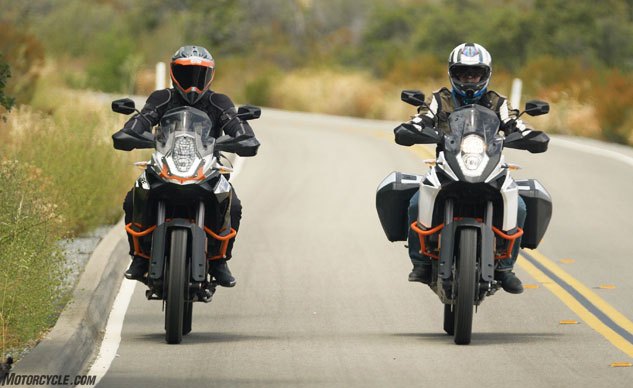
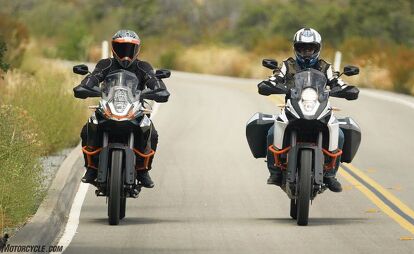









































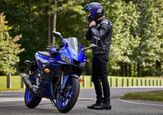
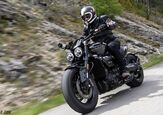
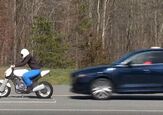
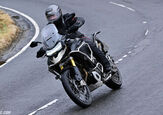
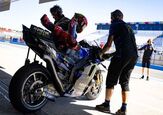

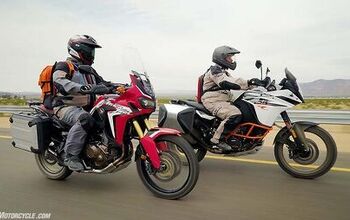
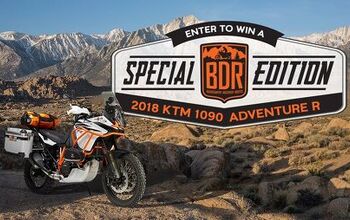
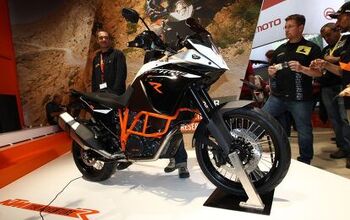
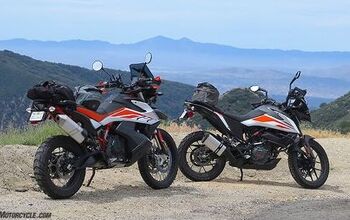
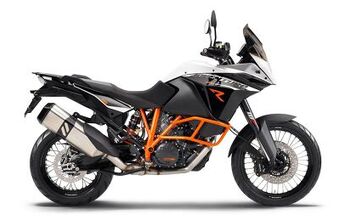
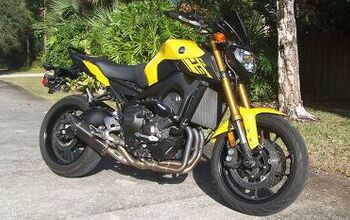
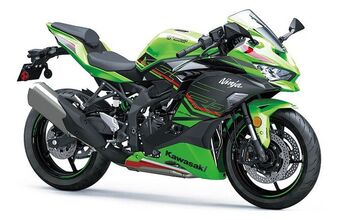
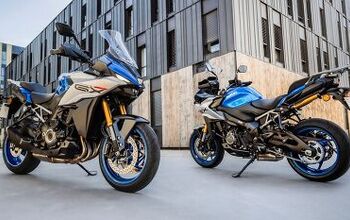
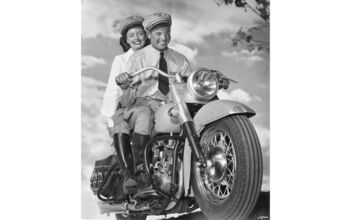
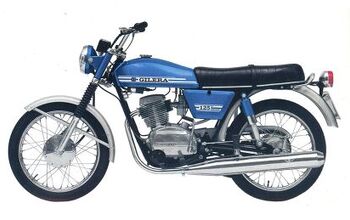
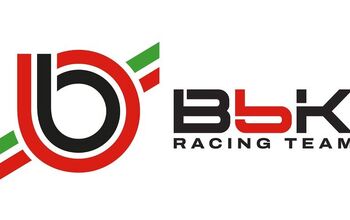
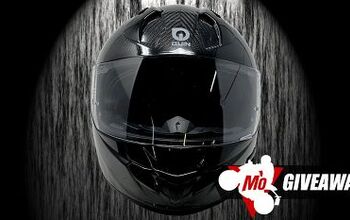
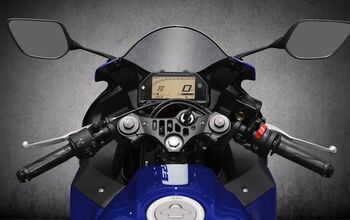
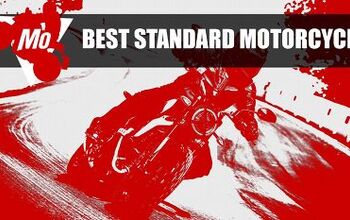

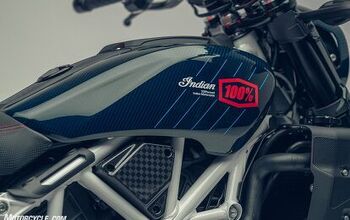
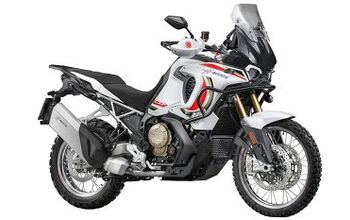
Comments
Join the conversation
Interesting you raved about the fueling on the 1090R, yet the dyno grafts show a big dip around 5500rpm for the 1090, while the 1190 shows a relatively smooth curve. I understand fueling has much to do with off/on throttle etc., but this mid range dip is something that many publications complain about when found in other bikes, such as Ducati. By the way, great comparison since I have found left over 1190's out there for $13,000. but often wondered whether new or left over was the better choice.
Who stood it up and lifted the stand for Burns?